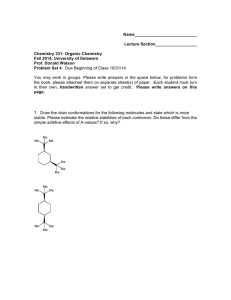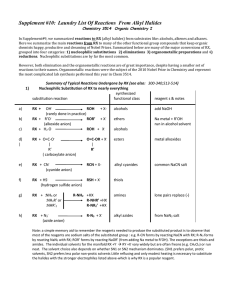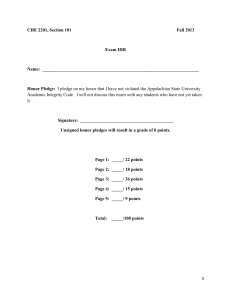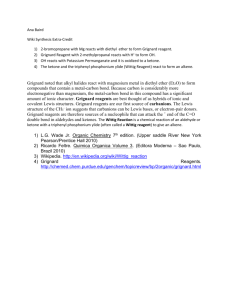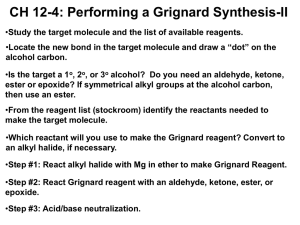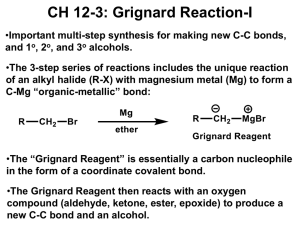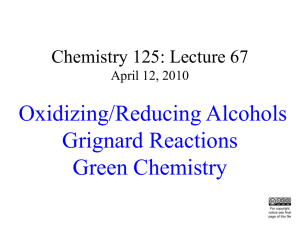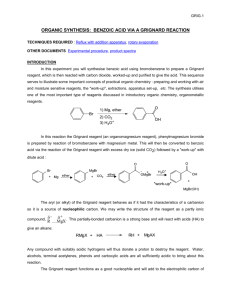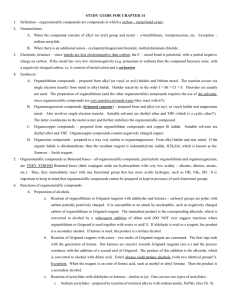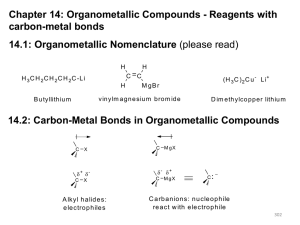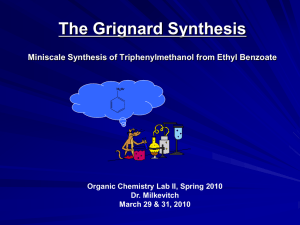Chapter 11: Reactions at an sp3 Hybridized Carbon III. Substitution
advertisement
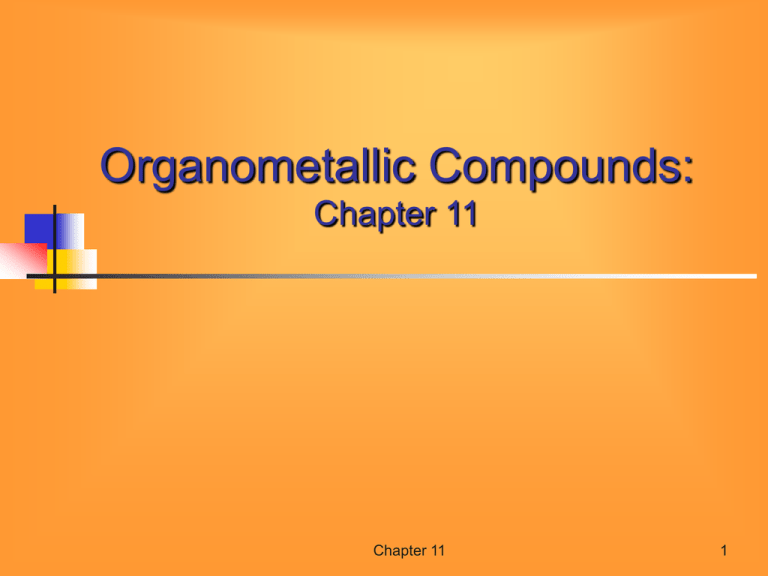
Organometallic Compounds: Chapter 11 Chapter 11 1 Organometallic Compounds Most metals are less electronegative than carbon In general a carbon bonded to a metal is nucleophilic and carbanion-like (C–) Four major classes of organometallic compounds are: Organolithium compounds Grignard reagents Cuprates Organopalladium compounds Chapter 11 2 Grignard & Lithium Reagents Grignard and lithium Organometallic reagents made by reacting a halide with elemental metal Mg essentially slides into C-halogen bond Li simply replaces halogen Chapter 11 3 Grignard & Lithium Reagents Although the carbon–metal bonds are not completely ionic, organolithium compounds and Grignard reagents react as if the carbon portion were a carbanion Consider the reaction of a Grignard reagent with an ethylene oxide Ethylene oxide is a good way to extend a carbon chain by two carbons via use of halide to make organometallic cpd with negative charge on C O CH3CH2CH2CH2MgBr CH3CH2CH2CH2CH2CH2O + CH2 CH2 2+ CH3CH2CH2CH2CH2CH2O H - + Mg + Br CH3CH2CH2CH2CH2CH2OH Chapter 11 4 Gilman Reagents Gilman reagents, also called organocuprates, are prepared from the reaction of an organolithium reagent with copper(I) iodide in diethyl ether or THF Chapter 11 5 Gilman Reagents When a Gilman reagent reacts with an alkyl halide (except F-) one of the alkyl groups replaces the halide Alkyl groups can substitute halogens attached to alkene or aromatic C with Gilman reagent; impossible with SN1 or SN2 reaction Mechanism unknown, probably radical Chapter 11 6 Suzuki and Heck Reactions Various palladium catalysts substitute ordinary unfunctionalized alkenes for Br, I, or triflate (OTf) leaving group attached to benzene or alkene (Heck). Reagent can even be made to substitute alkyl groups if a dialkoxyalkylborane reagent is used with it (Suzuki). Chapter 11 7 Grubbs & Schrock Metathesis Terminal alkenes couple eliminating ethylene with rhodium catalyst (Grubbs). Terminal alkynes couple eliminating acetylene (ethyne) using molybdenum or tungsten catalyst (Schrock). Chapter 11 8 Retrosynthetic Analysis: Using Ethylene Oxide (EO) Product has 2 extra C’s plus CN 2 extra C’s mean use EO Always work back to an ROH for EO analysis Retro EO addn removes 2 C’s and an OH Here CN has sub’d for an ROH-derived LG (leav grp) Make OTs the LG & derive the ROTs from ROH Cyclohexyl C- attacks EO to make this ROH Chapter 11 9

